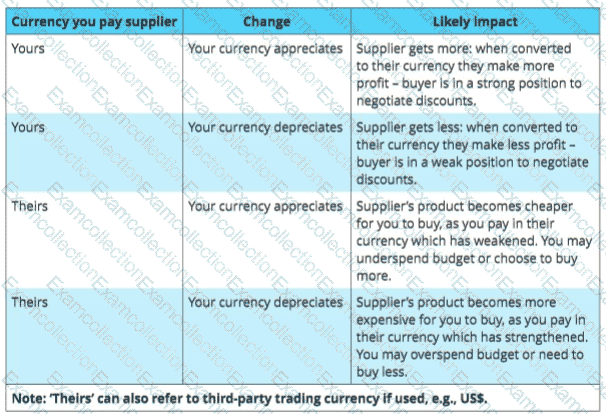CIPS L4M5 - Commercial Negotiation
Logibox Ltd sets prices based on what consumers are prepared to pay. Which pricing strategy is this?
Which of the following are variable costs?
What is a benefit to the buyer of having a BATNA (best alternative to a negotiated agreement) in a negotiation?
Which of the following should be adopted to minimise the conflict between parties in commercial negotiation?
Buyers should have the ability to analyse the costs of their purchases not only for determining their impact to their organisation's cost but also for the purpose of reducing them during commercial negotiations to contribute to the profitability of their organisation. One way of analysing costs is to classify them into direct and indirect costs.
Which ONE of the following is an explanation of 'direct costs'?
It may be more difficult to buy on a credit from supplier who locates in a country with a hyperinflation? Is this assumption true?
An organization should develop different relationships which are appropriate to each supplier situation. Which ONE of the following analysis methods could help to identify these?
Which of the following is the process enabling the buyer to share with the supplier their purposes and needs to focus on some specific areas such as quality, cost, social and environmental standards, etc in the supplier's bids?
XYZ Ltd is importing goods from overseas. They prefer to pay their supplier in their own currency. Which of the following is a true statement?
A procurement manager has decided to bring in a junior member of their team to a negotiation meeting. Which of the following would be suitable roles for this junior member of the team?
Note taker
Expert
Observer
Chair



 Table Description automatically generated
Table Description automatically generated